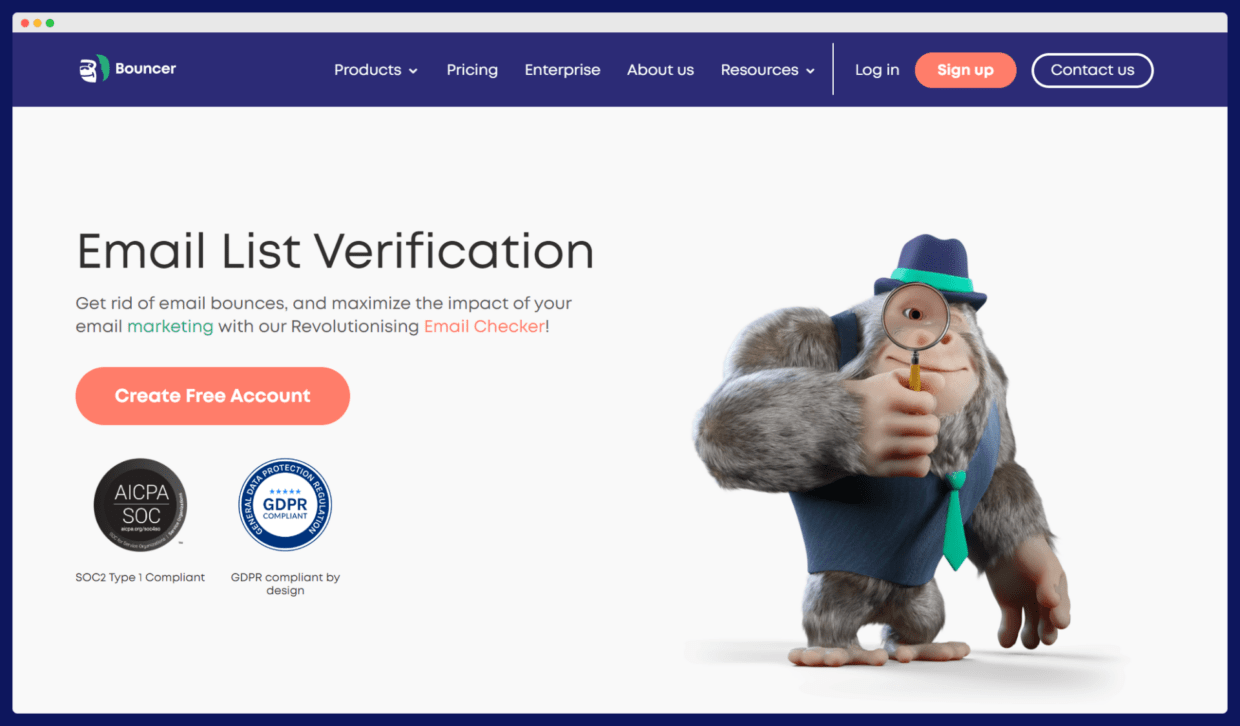Find out what it is, why it matters, and practical steps to enhance yours. Battling a bad score? Just starting out? This article has everything you need to improve your domain reputation
What is email domain reputation?
Email domain reputation is how mailbox providers see the emails from your domain.
It’s super important for email marketers because it helps decide whether your emails go to the inbox or the spam folder.
👉 A good email domain reputation makes sure that your emails reach your audience.
👉 A poor reputation means many of your emails might go to the spam folder or get blocked.
Mailbox providers use different factors to check your reputation, for instance, how many people mark your emails as spam. They also look at your sender reputation.
Your sender reputation includes your email domain reputation and your IP reputation. Spam complaints and sending emails to invalid addresses harm your site’s reputation as well.

source: Storyset
Email domain reputation vs IP reputation
Both are critical for email delivery. They decide if your emails reach the inbox or go to spam.
But what are the main differences? Let’s take a look at a table to make things clear:
| Feature | Email domain reputation | IP reputation |
| What it is: | How mailbox providers see your domain | How mailbox providers see your IP address |
| Who it affects: | Your entire domain | Specific IP addresses used to send emails |
| Key factors: | Sending practices, spam complaints | Email volume, spam complaints, blacklist status |
| Impact of bad reputation: | Poor domain reputation means emails might go to spam or get blocked | A bad IP reputation can get emails blocked or sent to spam |
| Scope: | Broad, affects all emails from the domain | Specific, affects emails sent from that IP address |
| Recovery: | Fixing sending practices, reducing spam complaints | Changing to a dedicated IP address, improving sending habits |
⚠️ Always monitor both to keep your emails out of the spam folder.
How to check your email domain reputation?
If you care about your email deliverability (check out the email deliverability guide), checking your email domain reputation should be your habit.
First, remember that each ESP has its way of measuring reputation. They look at factors like spam complaint rate and how often you land in the inbox. Each of these factors tells the ESP how trustworthy your sending domain is.
There are several tools you can use to check your domain reputation. For example:
#1 Talos Intelligence – gives insights into how your domain is viewed globally. Are you seen as a spammer or a legitimate sender?
#2 Google Postmaster Tools – if a lot of your audience uses Gmail, this tool is invaluable. It shows how Google views your sending domain.
#3 Sender Score – think of it like a credit score but for your mail server. It reflects how ESPs view your domain based on your sending habits.
#4 MXToolbox – checks your domain for any issues that might harm your email reputation. It looks for blacklists, mail server status, and DNS problems.
#5 Barracuda Central – has a vast database and strong blacklists. Checking your domain here helps you find out if you’re on a blacklist.
Using these tools helps you understand where you stand. If your score is low, take steps to handle spam filters better and ensure your emails reach the inbox.
Using these tools is just the first step. Regular checks and maintenance of your sending habits and domain health – these are the things that keep your email reputation strong!
How to fix your email domain reputation?
Your email domain reputation can always be better, no matter how good it is.
We’ve gathered golden tips and tricks to fix it.
01 Set up email authentication protocols
Internet service providers use email authentication protocols to verify that emails coming from your domain are legit. If you skip this step, your emails could look suspicious.
But if your emails show valid authentication, they pass through the spam filters and make it to the inbox.
You’ll want to use SPF (Sender Policy Framework), DKIM (DomainKeys Identified Mail), and DMARC (Domain-based Message Authentication, Reporting, and Conformance). Each one adds a layer of credibility to your emails.
If you have a bad domain reputation, setting up these protocols tells the world, and more importantly, internet service providers, that you’re serious about sending good emails.
02 Clean and validate your email lists
And do it on a regular basis.
When you send marketing emails to active, valid addresses, your chances of reaching real people go up. Also, when your emails get to an inbox, email service providers see that you send good emails. It helps keep your IP and domain reputation solid.
A handy tool to help you with this is Bouncer.

Bouncer verifies your email addresses. It determines if the format of the email is correct, if the email domain exists, if the mailbox can get emails, and more.
If you use Bouncer, you can be sure you’re not sending marketing emails to dead ends.
Check out other products of Bouncer helpful for email marketers:
- API ➡️ Use Bouncer’s API to check emails right when people sign up on your site. It keeps your list clean from the start.
- Integrations ➡️ Bouncer works with tools you might already use like Mailchimp and more.
- Toxicity Check ➡️ The tool helps you spot risky emails that could mark your messages as spam. It’s good to know these before they cause trouble.
- Deliverability Kit ➡️ Check if your emails are likely to end up in the inbox. You will get alerted if anyone blacklists you.
- Data Enrichment ➡️ Get more info about your email subscribers. Send emails that they would like more.

03 Warm up your email address before sending out anything
Warming up your email address can help you build a solid relationship with email service providers. You let them know that your emails are worth delivering to the inbox.
A handful of tips to get started:
✔️ Start small. Send a few emails at first to people you know like family or friends. These should be people who will likely open your emails and not mark them as spam.
✔️ Monitor what happens to these emails. Make sure they are getting to the inbox. If you notice many of your emails are not reaching their destination, slow down and check if there’s something wrong.
✔️ Increase the number of emails gradually. As more of your emails get opened and not marked as spam, you can start sending more. But remember, the increase should be gradual. Sudden spikes in email volume can make email service providers suspicious.
📚 Read more: The Ultimate Guide to Inbox Placement for Marketers.
04 Take care of SPF, DMARC, and DKIM
Setting authentication protocols is one thing, but taking care of them is another.
But don’t worry, we’ve got you covered with some tips.
SPF:
- Find out which mail servers send emails to your domain.
- Create an SPF record in your domain’s DNS settings that lists all these servers.
- This tells email service providers that the servers listed are okay to send emails from your domain.
DKIM:
- Get a digital signature key from your email service provider.
- Add this key to your domain’s DNS records.
- Attach this digital signature to every email you send. It helps verify that you sent the email and nobody changed it during transit.
DMARC:
- Decide what should happen to emails that fail SPF or DKIM checks. You can choose to have them rejected or sent to spam.
- Set up a DMARC record in your DNS settings that tells email service providers your preference.
- Include a way for email service providers to report back to you about emails that pass or fail. The feedback can help you fix issues.
Taking care of these settings can seem a bit technical, but you can usually find guides on your email service provider’s help pages. You can also hire a professional to set them up correctly.
👉 Read more: How to ensure email delivery?
05 Use double opt-in to ensure cleaner lists and better compliance with the law
When someone signs up for your emails, they get an email asking them to confirm their subscription. They need to click a link to say “yes, I want these emails.” This is the double opt-in.
Why it’s important? It keeps your email list clean. Only people who really want your emails will confirm. You avoid sending unwanted emails, which can lead to spam traps and hurt your domain reputation check.
Follow the law: In some places, laws about email marketing are strict. Double opt-in helps you follow these laws because each subscriber gives clear permission.
Keep your list high-quality: With double opt-in, the chances are higher that people on your list are interested in what you send. They took the extra step to confirm.
Set it up: Choose an email service provider that supports double opt-in. They can guide you through setting it up. Usually, you turn on a setting and customize the confirmation message.
06 Make unsubscribing easy
Sometimes, someone signs up for emails but later decides they don’t want them anymore. That’s normal. You need to let them leave easily.
Why is that? If someone finds it hard to unsubscribe, they might mark your emails as spam. Too many spam marks can hurt your domain reputation and IP reputation.
Make sure the unsubscribe link in your emails is easy to find and works with just one or two clicks.
⚠️ In many places, laws require that you have a clear way for people to unsubscribe.
07 Segment your email lists and send relevant, engaging content
Not everyone likes the same type of email.
Segmenting your list means you group people based on what they like or need. For example, you could have a group for those who like sales, another for those who prefer new product updates, and so on.
To improve your domain reputation, send them emails that fit each group’s interests – segment your audience according to what catches their interest.
When your emails hit the right spot, people engage more. They open them, click on links, and even forward them to friends. All of this activity suggests to email service providers that your emails are welcome. That’s what’s good for your IP reputation and domain reputation.
But the work is not done yet – monitor how different segments respond.
If one group isn’t engaging, try something new with them. Split testing could be a good idea. Always look for ways to keep your content fresh and relevant to level up your sending reputation.
EXTRA TIP: Monitor your email deliverability and determine how and when to do it.

source: Storyset
Conclusion
Believe it or not, your emails could be one click away from the spam folder. With the right steps and tools, you can make sure your emails are welcomed into inboxes, not spam folders
Maintain a positive domain reputation – send emails wisely: regular checks, good sending practices, using authentication protocols, and email verification are your best allies.
And for the last, use Bouncer to ensure emails to valid, active addresses. Give Bouncer a try with 100 free verifications, and start sending emails that count!


